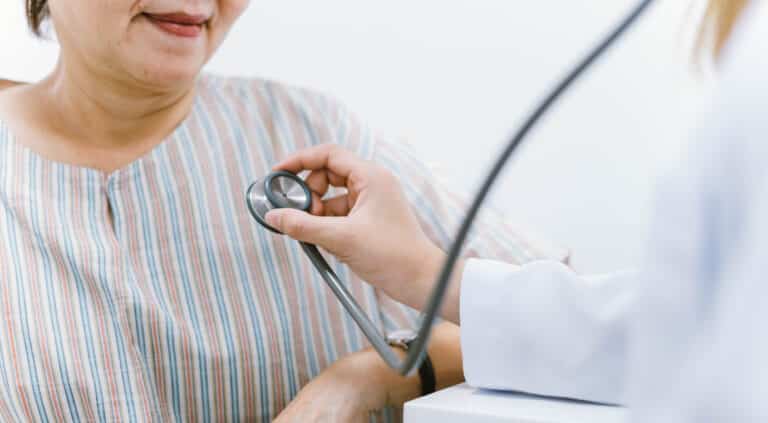What Are the Most Important Elements of the Chest?
Everyone knows where their chest is. But doctors and lawyers use the term “chest” in a specific sense. Your body has three main sections. Your head contains your brain. Your thorax contains your vital organs, such as your heart and lungs. Your abdomen contains the abdominal organs like your digestive system.
When doctors refer to your chest, they usually refer to the outside of the thorax rather than the organs inside it. The musculoskeletal structures that protect your chest cavity include:
Spine
You might not think of your spine as part of your chest. But remember that your chest includes both the front and back of your thorax. Your spine runs down your back and provides an anchor point for your ribs.
Ribs
Your ribs are the most notable structure of your chest. You have 24 total ribs with 12 ribs on each side. These ribs form a cage around your vital organs, protecting them from impacts and penetrating objects.
You have seven true ribs at the top of your ribcage. These ribs attach to both your spine and sternum. Below these true ribs, you have three false ribs. These ribs attach to your spine and to the true ribs. At the base of your ribcage, you have two floating ribs that attach only to your spine and to nothing in the front of your body.
Cartilage
Cartilage is a form of tough but flexible connective tissue. It holds your true ribs to your sternum. It also connects the false ribs to the true ribs.
Muscles and Tendons
Muscles sit over and between the bones of your thorax. Tendons connect the muscles to your bones. These muscles connect ribs to each other. They also connect your ribs to your collarbones, shoulder blades, spine, pelvis, and skull. The chest muscles help you support your weight and move your body.
Ligaments
Ligaments have a tough, elastic texture. They hold bones together at joints. In your chest, ligaments hold your ribs to your spine.
Hurt? Let Jay and His Team Help You
Call for YOUR FREE Case Review
What Can Cause a Chest Injury?
Chest injuries typically happen in three ways:
Hyperextension
Hyperextension injuries happen when forces from an accident stretch your soft tissues. This stretching causes your soft tissues to form small tears or even rip apart.
A car accident can cause hyperextension injuries as your body whips around due to the collision. You can also experience hyperextension injuries when you fall awkwardly or try to catch yourself in a slip and fall accident.
Blunt Trauma
Blunt trauma injuries happen when something impacts your chest without piercing it. These injuries can occur when something heavy falls onto you or slams into you in a workplace accident. Or they can happen when you fall and hit your chest on the ground.
Penetrating Trauma
Penetrating trauma injuries occur when you suffer an open wound. The object that penetrated your chest might stay in the wound or just tear it open without remaining inside. For example, you could suffer a penetrating chest injury when you slide across broken glass during a motorcycle accident, even if none of the glass gets embedded.
What Are Some Common Chest Injuries?
Chest injuries damage the musculoskeletal structures that surround the chest cavity. They can also lead to thoracic injuries to the vital organs in the chest cavity. Some common chest injuries include:
Chest Bruises
A chest bruise is a common chest injury caused by your seat belt. When your vehicle collides with something, your body wants to keep moving. As your body bends forward, your chest hits your seat belt. The seat belt can save your life, but in doing so, it can bruise your chest.
Chest bruises happen when blood vessels tear under the skin. Blood accumulates in your soft tissues. The accumulation of blood causes your skin to swell and discolor. The injury will also produce pain. Fortunately, the symptoms from these injuries usually last only a few days.
Dislocated Rib
A rib can dislocate when your accident tears the cartilage holding the front of your ribs or the ligaments holding the back of your ribs. When it pops out of place, the rib can press on soft tissues and nerves. This irritates the compressed tissues and causes inflammation, swelling, and pain.
Fractured Rib
A blunt impact on your ribs can break them. This will produce pain and swelling, especially while taking a deep breath. A fractured rib will limit your movement and flexibility but is not dangerous unless you fracture multiple ribs in multiple locations.
When you suffer multiple rib fractures, you could develop flail chest. This injury happens when rib fragments float freely instead of remaining anchored to the sternum or ribs. This is a serious injury with a mortality rate as high as 36%.
What Compensation Can You Pursue for a Chest Injury?
When your chest injury results from someone else’s actions, you may be entitled to pursue compensation. Typically, your personal injury lawyer will prove liability for your injury by showing that another party acted with negligence.
If you can prove negligence, you can recover compensation for your economic and non-economic losses. Economic damages include doctor’s bills and other medical costs. They also include income you lost by missing work during your recovery.
Non-economic damages include the non-financial impact on your quality and enjoyment of life. These losses include the pain and emotional distress you suffered. They also include your intangible losses, like disabilities that limit your activities.
A chest injury can cause serious, even fatal, symptoms. Contact the Jay Murray Personal Injury Lawyers for a free consultation or call (214) 915-2614 to learn about your legal right to pursue compensation for your chest injury.

